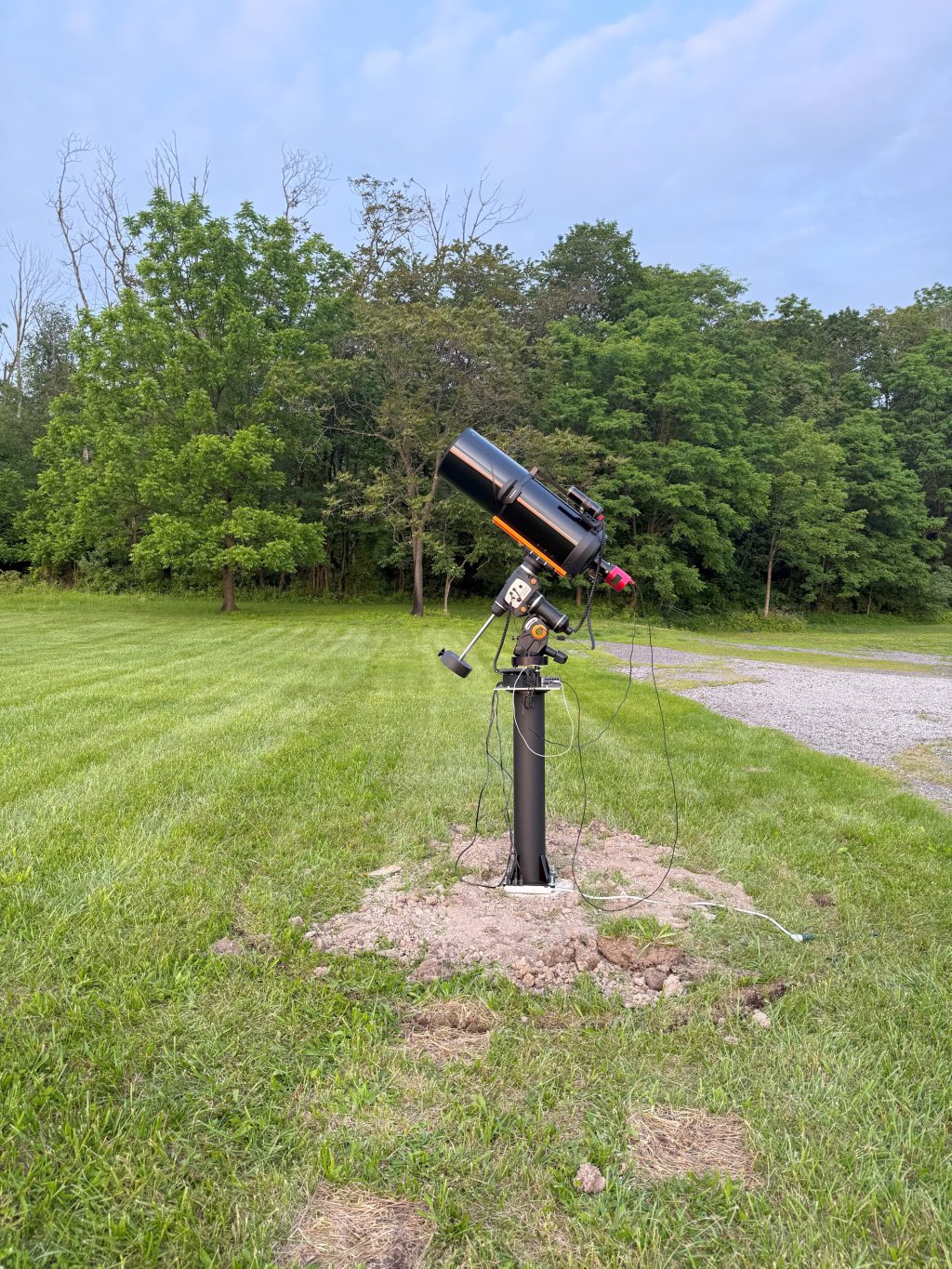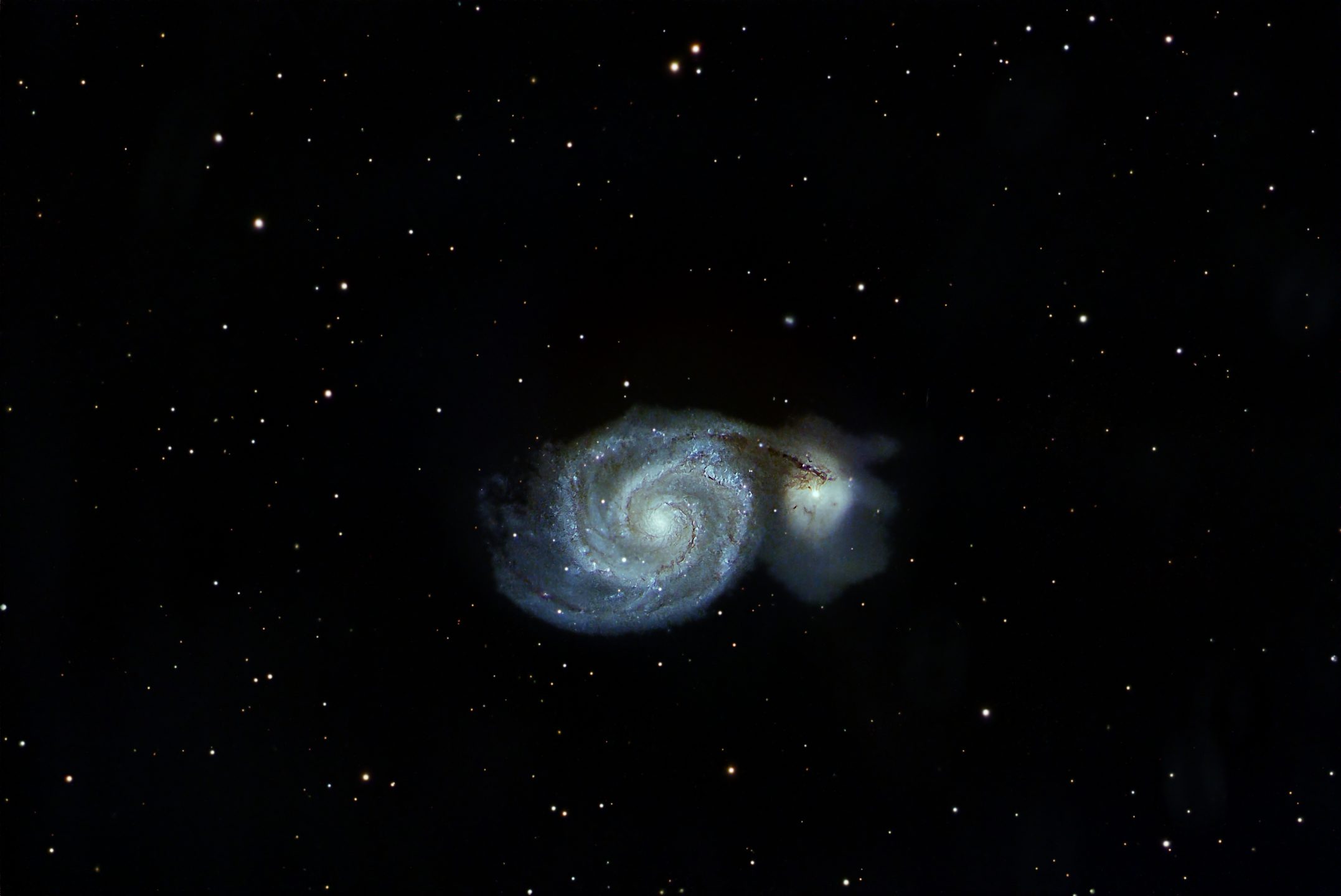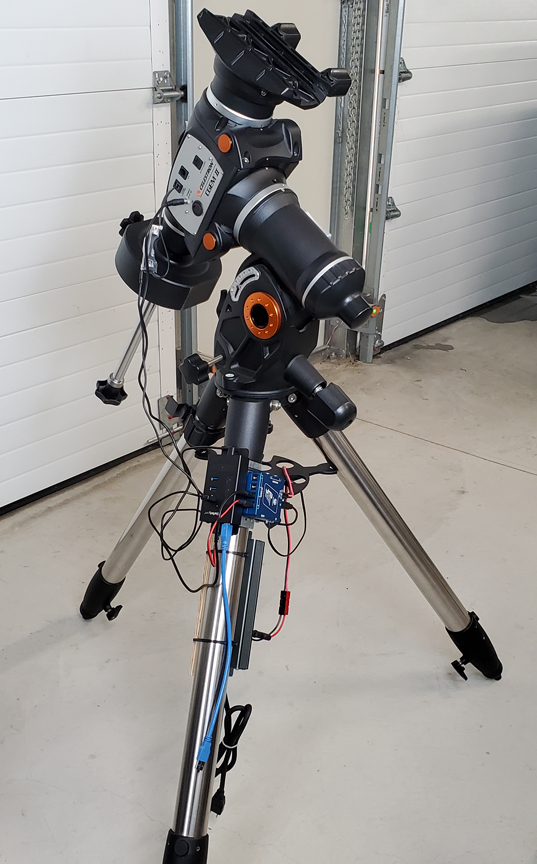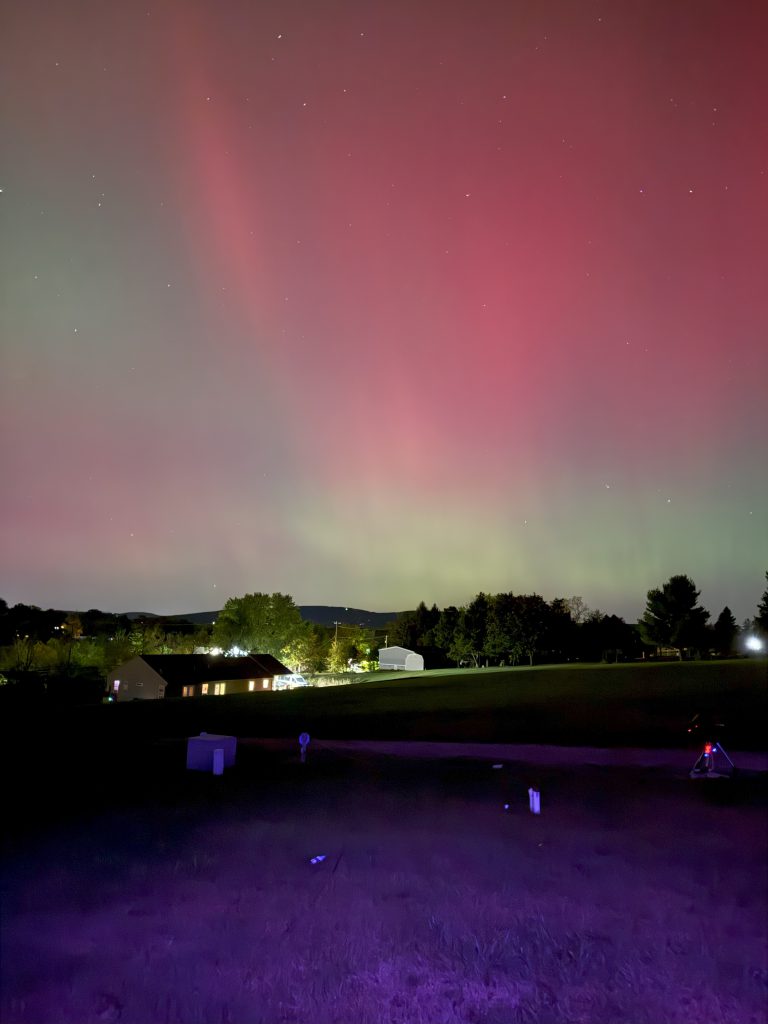
I learned through trial and error that a permanent pier is far superior to the standard tripod that came with my telescope and mount. The difference in steadiness, vibration after slewing, calibration, and polar alignment is remarkable.
After slewing, I no longer have to wait several seconds for the mount to settle; it stabilizes immediately. Tracking has improved significantly. As a matter of fact, just for fun, I pointed the telescope at a distant galaxy and captured 10-minute subs.
I no longer seem to experience vibrations, which allows for longer and sharper exposures.
The mount is always oriented toward celestial north, so setup is much faster. I simply ensure that it is pointed at Polaris before beginning slewing or imaging.
My mount also seems to remain properly polar aligned, which results in much better tracking and guiding.
First Light Success
At approximately 6 p.m., I began setting up the equipment, including power cords and the CGEM II mount. Although the sky was overcast at the time, the Astropheric app forecasted clearing skies after 9 p.m. Given the increased height of the mount, I prioritized completing the installation during daylight hours to ensure safety and precision during the initial operation.

Finally at 10:30 or so, the clouds broke. I was able to see Polaris. But the mount was pointing at Polaris’s location at 6 p.m. I performed a StarSense Auto Align and synced the mount to SharpCap. M51 seemed like a great target for the First Light. I had drifting, But I did not have shaking or focus issue. I took 61 5 minute long exposures. I had drifting because I did not polar align. The mount is SOLID, no other movement, no shaking, and no bumping. First Light Success!

